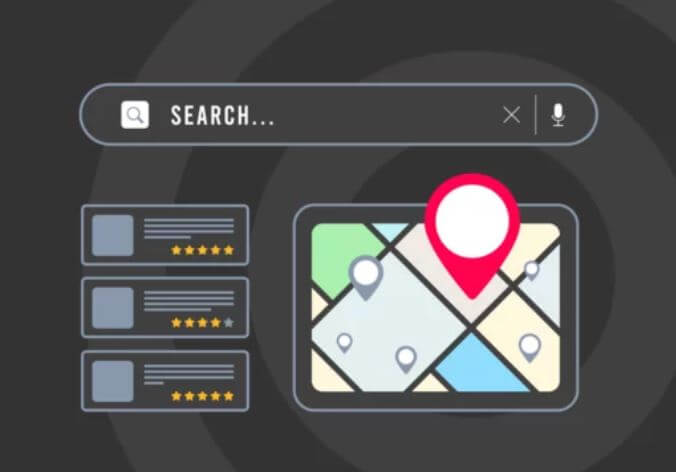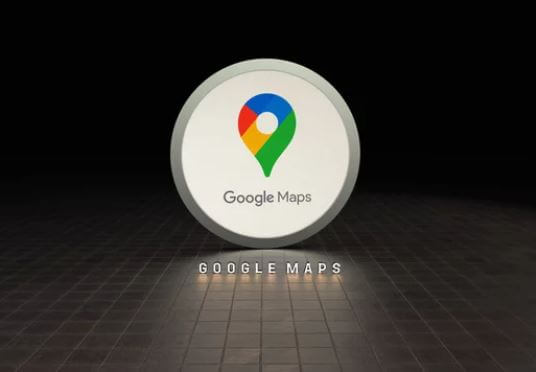“Unlock the Power of Local Search: Boost Your Business with Google Maps SEO”
Are you tired of being overshadowed by your competitors on Google Maps seo? Are you struggling to drive traffic to your physical locations? Look no further than our ultimate guide to Google Maps SEO.
Google Maps SEO involves optimizing your business listing on Google Maps to rank higher in local search results. Implementing the following strategies can increase your visibility, attract more customers, and ultimately outrank your competitors.
Claim Your Business Listing
The first step to optimizing your business for Google Maps is claiming your business listing. This simple and free process allows you to verify and manage your business information, including your address, phone number, and website.
Claiming your business listing on Google Maps is essential in Google Maps SEO. Here are the steps to claim your business listing:
- Go to Google My Business: Visit Google My Business (GMB) at https://www.google.com/business/ and click on the “Manage now” button.
- Sign in to your Google account: Sign in to your Google account or create a new one if you don’t have one.
- Enter your business information: Enter your name, address, phone number, website URL, business category, and other relevant information.
- Verify your business: Google will send you a verification code by mail, phone, or email to confirm that you are the owner company. Follow the instructions provided by Google to complete the verification process.
- Optimize your GMB listing: Once your business is verified, optimize your GMB listing by adding accurate and complete information about your business, including your name, address, phone number, website URL, business hours, and photos. Make sure that your information is consistent across all online directories and citations.
- Encourage reviews: Encourage your customers to leave reviews on your GMB listing. Respond to all reviews, positive or negative.
Claiming your business listing on Google Maps is free and can help improve your local search visibility. Ensure your listing is complete and accurate, and optimize it regularly to stay ahead of your competitors in local search results.
Optimize Your Business Information
Once you’ve claimed your business listing, optimizing your business information is essential. This includes your business name, address, phone number, website, and hours of operation. Ensure your information is accurate and consistent across all online directories and platforms, as this can impact your ranking on Google Maps.
Use Relevant Keywords
Keywords are crucial for optimizing your business for local search results. Research relevant keywords for your business and incorporate them into your business information and website content. This can help Google understand your business and improve your ranking in local search results.
Get More Reviews
Reviews are essential for building trust with potential customers and improving your ranking on Google Maps. Encourage your customers to leave reviews on your Google Maps listing and respond to all reviews – even negative ones – professionally and courteously. This can demonstrate your commitment to customer service and improve your online reputation.
Add Photos and Videos
Photos and videos can enhance your Google Maps listing and give potential customers a better sense of what your business offers. Add high-quality images and videos of your business and products, and ensure they are tagged with relevant keywords.
Conclusion
Following these strategies, you can optimize your business for Google Maps SEO and outrank your competitors in local search results. Remember to claim your business listing, optimize your business information, use relevant keywords, get more reviews, and add photos and videos to enhance your listing. With these tactics in place, you’ll be well on your way to dominating local search results on Google Maps.
FAQs
What is google maps SEO?
Google Maps SEO (Search Engine Optimization) refers to optimizing your Google Maps listing to appear higher in the search results when someone searches for your business or related keywords on Google Maps.
Google Maps SEO involves various strategies such as optimizing your business information on your Google My Business (GMB) listing, building relevant citations (mentions of your business name, address, and phone number) across the web, acquiring reviews and ratings from customers, and using keywords relevant to your business in the content of your GMB listing and on your website.
Optimizing your Google Maps listing can increase your visibility to potential customers searching for businesses like yours in your local area. This can ultimately lead to more website traffic, phone calls, and in-store visits, as well as higher rankings in Google search results.
What are the types of google maps SEO?
Businesses can use several types of Google Maps SEO strategies to optimize their Google Maps listing and improve their local search visibility. Here are a few examples:
- Google My Business (GMB) optimization: This involves optimizing your GMB listing by adding accurate and complete information about your business, including your business name, address, phone number, website URL, business hours, and photos. Ensuring that your information is consistent across all online directories and citations is essential.
- Citation building: This involves building mentions of your business name, address, and phone number (NAP) on other websites, directories, and online platforms. The more consistent and accurate your NAP information is across the web, the higher your business will rank in local search results.
- Reviews and ratings: Reviews and customer ratings are an important ranking factor for Google Maps SEO. Encourage customers to leave reviews on your GMB listing and respond to all reviews, positive or negative.
- Local link building: Building links from other local websites and directories to your website can help improve your local search visibility. You can do this by creating high-quality content that local websites will want to link to or by partnering with local organizations and businesses to promote each other.
- On-page optimization: Optimizing your website for local search includes including local keywords in your website’s meta titles and descriptions, creating location-specific pages, and optimizing your website’s content with local search terms.
These are just a few strategies businesses can use to improve their Google Maps SEO and increase their local search visibility.
How do I use Google Maps for SEO?
To use Google Maps for SEO, follow these steps:
- Claim and verify your Google My Business (GMB) listing: This is the first and most crucial step in optimizing your business for Google Maps SEO. You can claim your business listing by creating a GMB account and verifying ownership.
- Optimize your GMB listing: Make sure that your GMB listing is complete and accurate. This includes adding your business name, address, phone number, website URL, business hours, photos, and a business description. Use relevant keywords in your business description, but don’t stuff it with too many keywords.
- Add your business to relevant directories: To improve your local search visibility, add your business to relevant online directories such as Yelp, Yellow Pages, and other industry-specific directories. Ensure your NAP (name, address, phone number) information is consistent across all directories.
- Encourage customer reviews: Reviews and ratings are an important ranking factor for Google Maps SEO. Encourage your customers to leave reviews on your GMB listing and respond to all reviews, positive or negative.
- Build local citations: Building local authorities (mentions of your NAP information on other websites) can help improve your local search visibility. You can submit your business information to local directories, blogs, and websites.
- Use local keywords in your website content: Use local keywords in your website content to improve your local search visibility. This includes adding your city, neighborhood, or region to your website’s meta titles and descriptions, creating location-specific pages, and optimizing your website’s content with local search terms.
- Use Google Maps on your website: Embedding a Google Map can help improve your local search visibility. Make sure that the location on the map matches the site on your GMB listing.
Following these steps, you can use Google Maps for SEO and improve your local search visibility.
How do I increase my Google Maps rating?
To increase your Google Maps rating, follow these tips:
- Encourage customers to leave reviews: Ask your customers to leave a review on your Google My Business (GMB) listing. You can include a request in your email signature, on your website, or in a follow-up email after purchase.
- Respond to all reviews: Respond to all positive and negative reviews. This shows that you value customer feedback and are committed to improving their experience.
- Provide exceptional customer service: Excellent customer service can lead to positive reviews and higher ratings. Ensure your customers are satisfied with their experience by responding to inquiries and promptly addressing concerns.
- Offer incentives: Consider offering incentives such as discounts or free products in exchange for a review. However, ensure you comply with Google’s guidelines for review incentives.
- Display your rating on your website: Display your Google Maps rating to show potential customers you have a good reputation. This can help increase your credibility and encourage customers to choose your business over competitors.
- Address negative reviews: Address negative thoughts and resolve the customer’s issue. This can lead to the customer changing their thinking to a positive one.
Remember, it’s essential to maintain the quality and authenticity of your reviews. Do not buy fake reviews or engage in other activities that violate Google’s guidelines. Following these tips and providing excellent customer service can increase your Google Maps rating and improve your online reputation.





